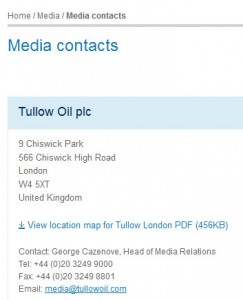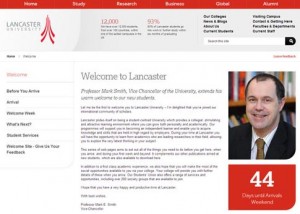 Gone are the days when actual physical folders called ‘press kits’ were handed to journalists by PR people, jammed full of a company’s recent press releases, bios for management teams, fact sheets, case studies, and other press related information on the company.
Gone are the days when actual physical folders called ‘press kits’ were handed to journalists by PR people, jammed full of a company’s recent press releases, bios for management teams, fact sheets, case studies, and other press related information on the company.
Instead, press kits have been streamlined and digitised, much to the pleasure of all in the news industry, making them easily accessible, searchable, environmentally friendly and comparatively lightweight.
From Page to Webpage
The modern day press kit is now referred to as the ‘online newsroom’, typically found in the press section of any corporate website. Despite the new preferred format, online newsrooms often do not match up to the traditional press kit in terms of optimisation. They don’t often have much more information than a measly list of press release PDFs and the odd links to news coverage.
When the digitisation of press kits should really have given much more room to expand the information offered without the physical size and weight boundaries of paper and folders, it would seem in reality the online newsroom only led to corporate press kits becoming somewhat lazy and incomplete.
How does your newsroom shape up?
The following article is the first in a series, which aims to highlight all the areas in which a newsroom should be optimised in order for it to be useful and interesting to your journalist contacts, with some examples of excellent newsrooms from some of the world’s largest corporate websites, to demonstrate how online newsrooms should function.
Newsroom Essential: Media Contact Details
Unlike when physical press kits were literally handed to journalists by the PR or media contact for a company, when a journalist enters a company’s online newsroom, they most likely have no idea who the contact is regarding media enquiries. They may find everything they need from the press releases, fact sheets, company articles, etc that the online newsroom contains, but in the majority of cases a press contact will need to be dealt with in order to arrange interviews, gain statements, or be sought out for future reference.
 You don’t need to list your whole PR team’s names and details, just the person who you want to deal directly with all media enquiries; typically the Head of Media Relations or someone in a similar job role. And be sure to offer different ways to contact them, including phone, email, and even social media and Skype. Be sure to keep this up to date, as it often occurs that a person leaves and the company doesn’t get round to changing their details in the newsroom for months, sometimes even years!
You don’t need to list your whole PR team’s names and details, just the person who you want to deal directly with all media enquiries; typically the Head of Media Relations or someone in a similar job role. And be sure to offer different ways to contact them, including phone, email, and even social media and Skype. Be sure to keep this up to date, as it often occurs that a person leaves and the company doesn’t get round to changing their details in the newsroom for months, sometimes even years!
One company that stood out for me as having a good press contacts page was Tullow Oil Plc. They didn’t include any social media profiles, but they did include just the one main media contact and his name, telephone and fax numbers, and an email address for him.
Unfortunately, even large corporations can get it wrong on such simple things. As a journalist, I would like to be able to go straight to the contact details of the person I need to contact for media enquiries, whereas often large companies offer only a switchboard number, which I must then call and speak to 2 or 3 people before finding the person I am after. In other cases, companies often think that is helpful to give details of every PR and media team member, meaning I have to work out for myself who the correct contact is.
Journalists are on tight deadlines for stories and so having the information available quickly and easily makes their jobs much easier.
I graduated in 2011 with a 2:1 degree in BA HONS Journalism and have since set up my own freelance business specialising in digital marketing. I write for a variety of digital marketing blogs as well as working on blogs and social media channels for clients in a range of B2B sectors.
You can catch me on the following social media channels:
Twitter: NatJWilson;
LinkedIn;
Google+.


